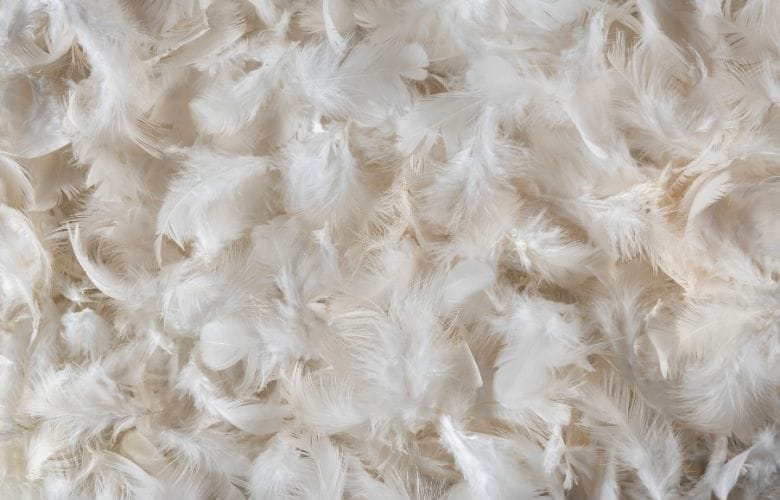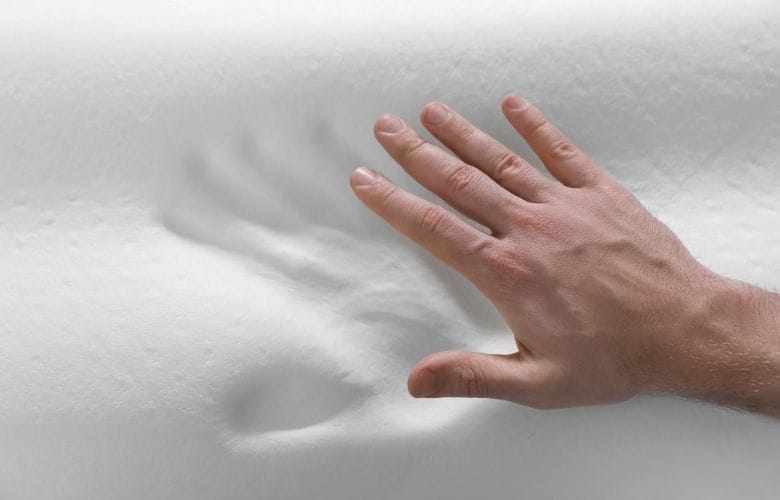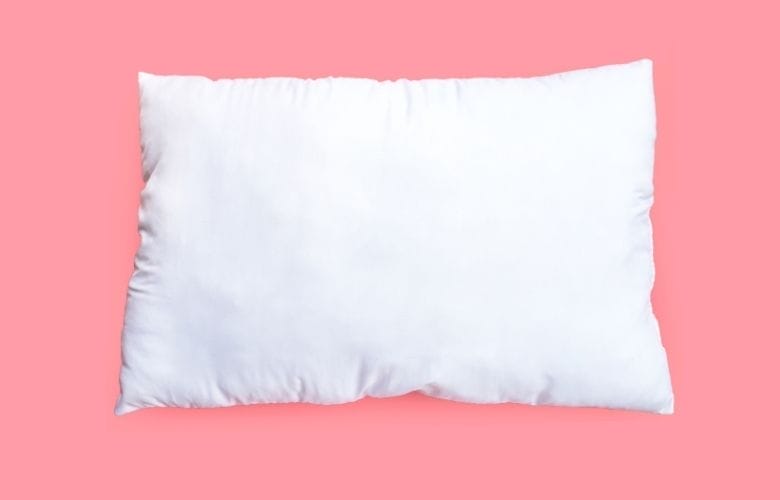Contoured or cervical pillows, usually memory foam or adjustable, that support the natural curve of the neck.
Blog
What is the Healthiest Pillow Filling?
Pillow filling refers to the material inside your pillow that provides support, comfort, and structure. From traditional feathers to modern memory foam, the filling significantly impacts your sleep quality, spinal alignment, and overall health.
What is Pillow Filling?
Pillow filling refers to the material used inside a pillow to provide loft, support, and comfort. Fillings can be natural, synthetic, or a blend of both. The type of filling determines not only how a pillow feels, but also its durability, breathability, and whether it is suitable for allergy sufferers.

Why Pillow Filling Matters for Health
Your pillow filling plays a crucial role in maintaining proper sleep posture and spinal alignment throughout the night. Poor support can lead to neck pain, headaches, and disrupted sleep patterns. Beyond comfort, the filling affects breathability and temperature regulation, helping you maintain an optimal sleeping temperature.
For those with allergies and sensitivities, certain fillings can harbour dust mites, mould, or contain chemicals that trigger reactions. Additionally, environmental and sustainability concerns are increasingly important, with many seeking eco-friendly options that don’t compromise their health or the planet.
Common Pillow Fillings Compared
Feather and Down
Traditional feather and down pillows offer exceptional softness and breathability, naturally regulating temperature throughout the night. However, they may trigger allergies in sensitive individuals and raise ethical concerns regarding animal welfare. They also require regular fluffing to maintain their shape.

Wool
Wool naturally regulates temperature, keeping you cool in summer and warm in winter. It’s naturally resistant to dust mites and has antimicrobial properties. Wool provides a firmer feel than down but requires regular fluffing and can be pretty heavy.
Cotton
Cotton filling is natural, breathable, and affordable, making it a popular choice for budget-conscious consumers. However, cotton pillows tend to flatten quickly and lose their supportive properties over time, requiring frequent replacement.
Buckwheat Hulls
Buckwheat hull pillows provide excellent neck support and maintain their shape well. This natural filling is particularly popular in Asia and is gaining interest across Europe. The downside is that they’re heavier than other options and can be pretty noisy when you move during sleep.

Microfibre/Polyester
These synthetic fillings are inexpensive, hypoallergenic, and easy to care for, often being machine washable. However, they’re not environmentally friendly, tend to lose support quickly, and don’t regulate temperature as effectively as natural materials.

Memory Foam
Memory foam moulds to your head and neck, providing personalised support that can help with spinal alignment. However, some memory foam pillows can off-gas chemicals and aren’t the most eco-friendly option. They also tend to retain heat, which may be uncomfortable for some sleepers.

Latex (Natural vs. Synthetic)
Natural latex is hypoallergenic, breathable, and sustainably sourced, offering excellent support and durability. Synthetic latex is cheaper but less healthy, as it may contain chemicals and doesn’t offer the same natural benefits as its organic counterpart.

What Makes a Pillow Filling Healthy
- Be non-toxic and free from harmful chemicals
- Resist dust mites, mould, and allergens
- Provide ergonomic support to maintain spinal alignment
- Be sustainably sourced with recognised eco certifications such as OEKO-TEX® Standard 100, GOTS (Global Organic Textile Standard), or Eco-Institut Certification
- Allow good airflow to keep sleepers cool and comfortable
The Healthiest Pillow Filling Options
| Filling Type | Durability | Allergy-Friendly | Eco Score | Comfort Level | Key Benefits |
| Natural Latex | Excellent (8-10 years) | Excellent | High | Firm-Medium | Supportive, long-lasting, sustainable |
| Wool | Very Good (5-8 years) | Very Good | High | Medium-Firm | Temperature control, dust mite resistant |
| Organic Cotton | Fair (2-3 years) | Good | High | Soft-Medium | Breathable and safe, budget-friendly |
| Buckwheat Hulls | Excellent (10+ years) | Excellent | High | Very Firm | Outstanding orthopedic support |
- Natural latex emerges as the top choice, offering exceptional support, longevity, and sustainability whilst being allergy-friendly.
- Wool provides excellent natural temperature control and dust mite resistance.
- Organic cotton is breathable and safe, but offers less support and durability.
- Buckwheat hulls are a niche option that provides outstanding orthopedic support for those who can adapt to their firmness and noise.
How to Choose the Right Pillow Filling Material
Your sleeping position significantly influences the ideal pillow filling. Side sleepers typically need firmer support to maintain spinal alignment, whilst back sleepers require medium support. Stomach sleepers generally need softer, thinner pillows to prevent neck strain.
Consider any allergies and sensitivities you may have. Those with asthma or allergies should opt for naturally hypoallergenic materials like latex or wool. If you have chemical sensitivities, avoid synthetic materials and look for organic certifications.
Your personal preference for firmness versus softness will guide your choice. Some prefer the plush comfort of down, whilst others need the firm support of buckwheat or latex. Considering your eco and sustainability values, natural materials generally have a lower environmental impact than synthetic alternatives.
For businesses seeking quality bedding products, partnering with a trusted hotel pillow supplier ensures consistent comfort and durability. Choosing the right source helps maintain guest satisfaction while supporting long-term value for hotels and accommodation providers.

FAQs
What are the healthiest pillows to sleep on?
Natural latex and wool pillows are widely considered the healthiest options.
Is it healthy to sleep on a wedge pillow?
Yes, wedge pillows can be healthy for specific conditions like acid reflux or sleep apnoea, as they elevate the upper body. However, they’re not suitable for general sleep as they don’t provide proper spinal alignment.
Are down pillows healthy?
Down pillows can be healthy if you’re not allergic to them. They’re breathable and naturally regulate temperature, but they may harbour dust mites and aren’t suitable for those with allergies.
Is a polyester fibre pillow healthy to use?
Polyester pillows are hypoallergenic, but aren’t the healthiest option as they don’t breathe well, may contain chemicals, and aren’t environmentally sustainable.
Is it healthy to sleep without a pillow?
For most people, sleeping without a pillow isn’t healthy, as it can cause spinal misalignment. However, some stomach sleepers might benefit from no pillow or a skinny one.
What are the healthy pillows for side sleepers?
Medium-firm pillows with higher loft, such as memory foam, latex, or adjustable fill, to keep head and spine aligned.
Are latex pillows healthy?
Natural latex pillows are amongst the healthiest options, being hypoallergenic, breathable, supportive, and free from harmful chemicals when certified organic.
Are feather pillows healthy?
Feather pillows can be healthy if you’re not allergic and they’re properly cleaned and maintained. However, they may trigger allergies and require regular replacement.
Are microfibre pillows healthy?
Microfibre pillows are hypoallergenic but aren’t the healthiest long-term option due to poor breathability, potential chemical content, and environmental concerns.
What are the healthy pillows for neck pain?
Is memory foam healthy to sleep on?
Memory foam can be healthy if it’s CertiPUR-US certified and doesn’t off-gas harmful chemicals. However, it may retain heat and isn’t as breathable as natural materials.
Are latex pillows better than down?
For most people, natural latex pillows are better than down as they’re more supportive, hypoallergenic, and longer-lasting, though down may be preferred for those seeking softness.
What pillow filling is best for people with allergies?
Natural latex and wool are best for allergy sufferers as they’re naturally hypoallergenic and resistant to dust mites and mould.
Which is the most eco-friendly pillow filling?
Organic latex, wool, and organic cotton are the most eco-friendly options, being biodegradable and sustainably sourced.
How often should I replace my pillow?
Replace pillows every 1-2 years for synthetic fillings, 3-5 years for down/feather, 5-8 years for wool, and 8-10 years for natural latex.
Conclusion
When choosing the healthiest pillow filling, prioritise natural, breathable materials that provide proper support whilst being hypoallergenic and sustainably sourced. Natural latex, wool, and organic cotton emerge as the top choices, offering the perfect balance of health benefits, comfort, and environmental responsibility for a truly restorative night’s sleep.
Conclusion
Pillow filling refers to the material inside your pillow that provides support, comfort, and structure. From traditional feathers to modern
Leave a Comment

 Nov 27, 2025
Nov 27, 2025 
